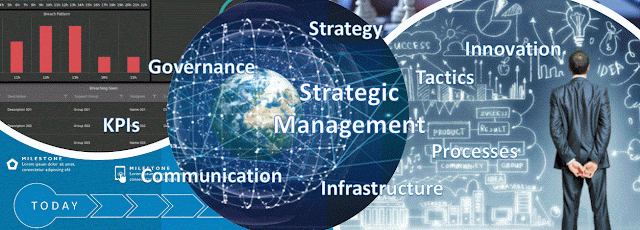
|
| Prompt Engineering Series |
Prompt: "write a blogpost of 600 words on the multiplicity of AI"
Introduction
Artificial Intelligence (AI) is often discussed in terms of singularity - the idea that AI will reach a point where it surpasses human intelligence and operates autonomously. However, an alternative perspective is multiplicity, which emphasizes AI’s ability to work in diverse, collaborative, and multi-agent systems rather than as a single dominant intelligence. The concept of multiplicity in AI suggests that instead of one all-powerful AI, we will see multiple AI systems interacting, complementing human intelligence, and shaping various aspects of society.
1. What Is AI Multiplicity?
Multiplicity in AI refers to the idea that AI should not be viewed as a
singular entity but as a collection of diverse AI systems working together.
This approach contrasts with the fear of AI singularity, which suggests that
AI could become uncontrollable or surpass human intelligence in a way that
threatens humanity. Instead, multiplicity focuses on:
- Collaboration between AI and humans to enhance problem-solving.
- Multiple AI systems working together to improve efficiency and accuracy.
- Diverse AI applications across industries, rather than a single dominant AI.
This perspective encourages distributed intelligence, where AI systems complement each other rather than compete for dominance.
2. AI Multiplicity in Governance and Ethics
The concept of multiplicity is gaining traction in AI governance, where experts argue that AI should be designed to offer multiple perspectives and options rather than a single authoritative answer. Research suggests that AI models often reflect mainstream narratives, limiting diversity in thought and decision-making.
To address this, AI governance can incorporate multiplicity-by-design,
ensuring that AI systems:
- Provide multiple viewpoints rather than reinforcing a singular perspective.
- Encourage users to seek additional information beyond AI-generated responses.
- Promote cultural and ideological diversity in AI-generated content.
By integrating multiplicity into AI governance, society can preserve diversity in thought and decision-making while benefiting from AI’s capabilities.
3. AI Multiplicity in Business and Innovation
Multiplicity is also shaping AI’s role in business and innovation, where
companies are leveraging multiple AI systems to optimize operations. Instead
of relying on a single AI model, businesses are adopting:
- AI-powered recommendation engines that analyze diverse consumer behaviors.
- Multi-agent AI systems that collaborate to improve efficiency.
- AI-driven automation that enhances human decision-making rather than replacing it.
This approach ensures that AI supports human creativity and problem-solving rather than dictating outcomes.
4. AI Multiplicity in Human-AI Collaboration
Rather than replacing human intelligence, AI multiplicity encourages
collaborative intelligence, where AI systems assist humans in complex tasks.
Examples include:
- AI-assisted medical diagnostics, where multiple AI models analyze patient data for accuracy.
- AI-powered research tools, helping scientists explore multiple hypotheses.
- AI-driven creative platforms, enabling artists and writers to experiment with new ideas.
This collaborative approach ensures that AI enhances human capabilities rather than replacing them.
Conclusion: Embracing AI Multiplicity for a Balanced Future
The future of AI is not about singularity but multiplicity - a world where multiple AI systems interact, collaborate, and support human intelligence. By embracing this perspective, society can ensure AI remains a tool for innovation, diversity, and ethical decision-making rather than an unchecked force.
Disclaimer: The whole text was generated by Copilot at the first attempt. This is just an experiment to evaluate feature's ability to answer standard general questions, independently on whether they are correctly or incorrectly posed. Moreover, the answers may reflect hallucinations and other types of inconsistent or incorrect reasoning.
















